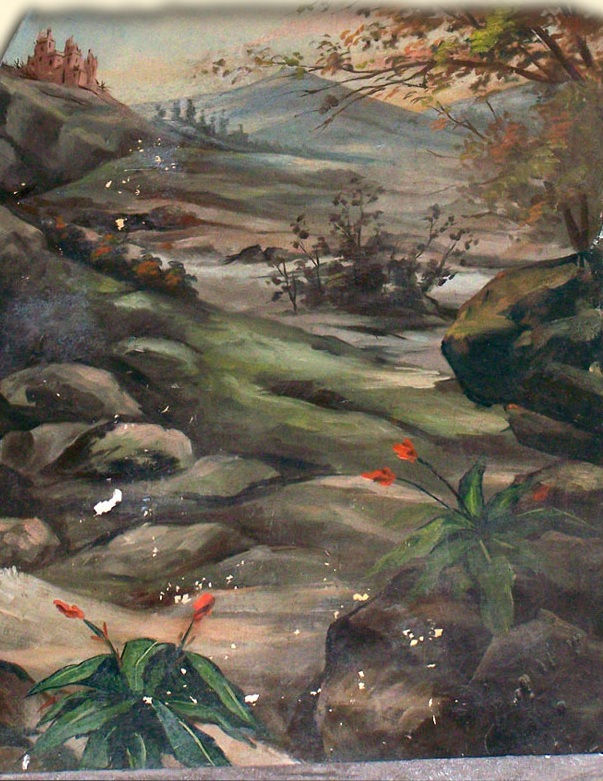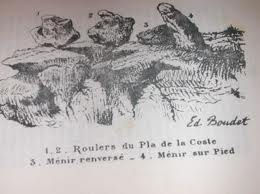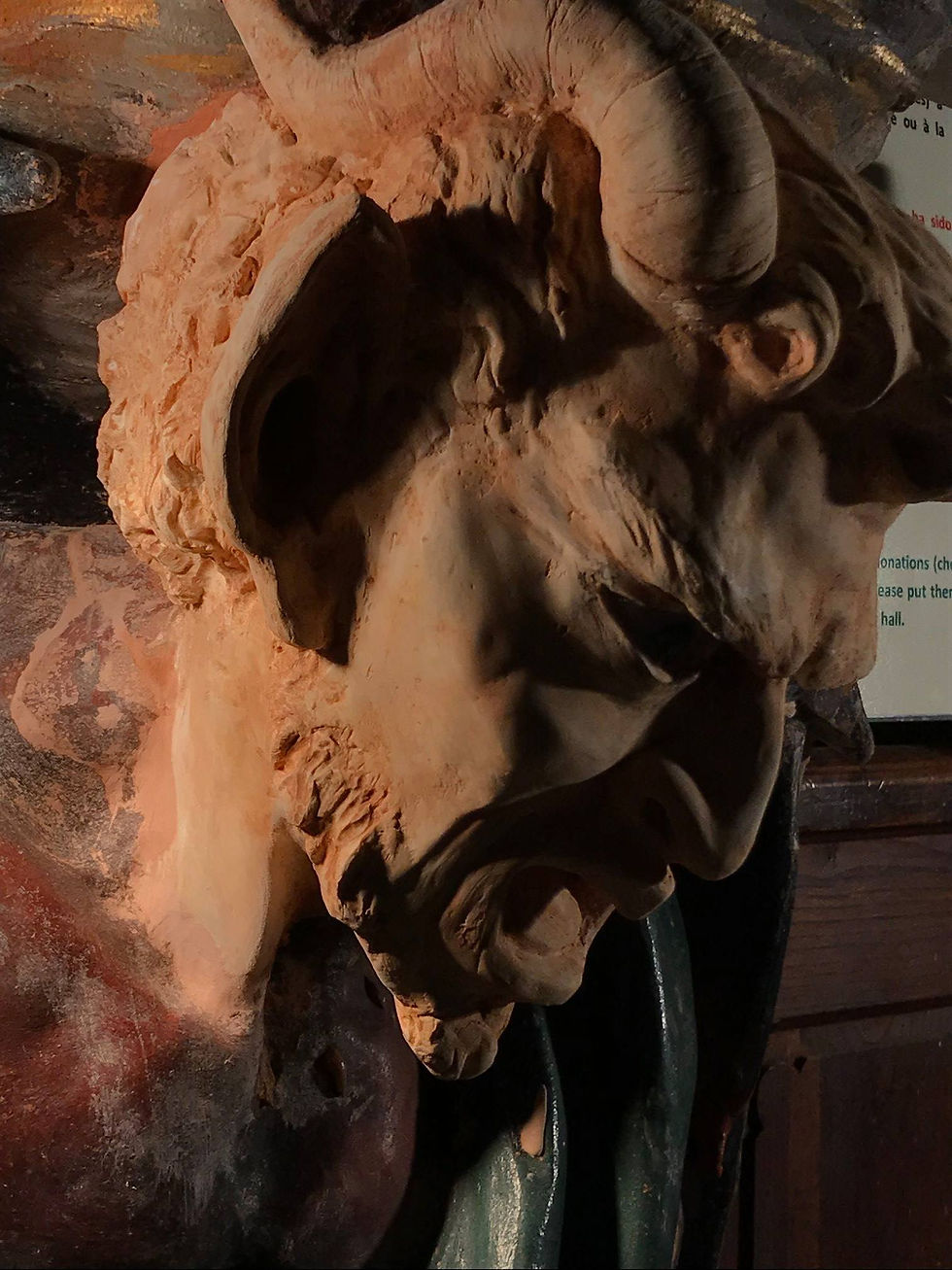VENEZ À MOI, VOUS TOUS QUI SOUFFREZ ET QUI ÊTES ACCABLES ...
- Jan 14, 2019
- 4 min read
Updated: Jan 15, 2019
Gerard de Sede has some interesting comments to say about this bas relief in his book L'Or de Rennes.
He writes; 'Here we see Jesus succouring the afflicted, a scene which is no way out of place in a church. Jesus is at the summit of a steep, flower-strewn landscape, covered with thick bushes. On this landscape, clearly visible, is a very large purse-shaped bag with a hole torn in it. And the artist has taken care to locate this flowery piece of land'

De Sede then goes on to record other observations. "Two stretches of country frame it [i.e. the flowery hillside]; on the one to the left, one can identify in the foreground the Bread Rock [ 'pierre du pain'] and on the horizon, the rocks known as the 'Roulers' on the Pla de la Coste, as well as the ruins of Blanchefort'.
“One cannot imagine a better way to invite us to hunt in the area of Rennes-les-Bains, the thermal spa where the sick are healed; a flowery landscape - which is to say, a landscape which once belonged to the Fleury family. A terrain, steep, wooded, marked by a cross and concealing the entrance to an opening, which like a purse, holds something precious.”





Or perhaps Blanchefort should have looked more like the above - a small fortified keep or tower, built along the borders, intended as watch towers where signal fires could be lit by the garrison to warn of approaching danger?


De Sede continues; 'On the right is the rock shaped in the form of a gaming-dice, which is at Serbairou and in the background, some ruins which appear to be Coustaussa'.


For me, the descriptions given by de Sede and his impressions seem quite bizarre. He thinks the ruins - i assume he means the white buildings when he refers to the right hand vista - are Coustaussa? Where is the rock that looks like a gaming-dice? Why does he not mention the old corrinthian capital lying on the ground?




Why didn't he mention this?

Or is this supposed to be the 'gaming-dice' rock representation?
De Sede happily continues; "One cannot imagine a better way to invite us to hunt in the area of Rennes-les-Bains, the thermal spa where the sick are healed; a flowery landscape - which is to say, a landscape which once belonged to the Fleury family. A terrain, steep, wooded, marked by a cross and concealing the entrance to an opening, which like a purse, holds something precious'.
It perhaps correlates with my last post. That is, the connections of Le Serpent Rouge and Henri Boudet. We had been discussing the Cross of 35cm - which we know Boudet mentioned, in relation to the points and places mentioned by de Sede. For example, the Dolmen described by Boudet as Pierre Levee and the largest (fourteenth) Greek cross on the slopes of Serbairou.On the same level as the dolmens, there is a huge rock which is decorated with a large stone, which is in the round shape of bread [Bread Stone].
De Sede writes further that "we shall find a third reference to this underground place ...' [why are we suddenly now underground?] 'Beneath the altar table , we find a naive picture .....Mary Magdalene is kneeling in a grotto through whose opening one can see the rock of Blanchefort facing the peak of Cardou ...'


" ...and also a rock suggestive of a human profile with a large nose .... beneath this picture there is an inscription with the text taken from one of the manuscripts Sauniere found .... this inscription, being Latin, would not normally have either accents or dots over the Is. Howver there are four which pick out the syllables Je De Ne Ni. Again this is a rebus which must be read, the spoken French giving the sounds of Jais [jet], De [dice], Nez [nose] Nid [nest] .....which hide indications of place names. Jais - a jet mine near Sougraignes, De, a raised stone in the form of a dice near Serbairou, Nez, the rock shaped like a nose ... can be found in the landscape at Peyrolles, Nid, the highest point in the area is the kaolin-rich eagles nest of Cardou'.
Again we can refer to Boudet. The word Dé [de Sedes 'de'?] focus's on something Boudet wrote in his True Celtic Language opus. He wrote:
"One might rightly wonder about these Celtic dolmen monuments. We found seven;. Five on the flanks of Serbaïrou, and two in Roukats. Most notable is located in front of the Borde-neuve, near a large square stone, strangely laid balancing on a rock. This dolmen, closed at one end, offers the image of a cave. By placing them on the path to Sougraignes the eye easily distinguishs the structure of all its parts. At the top, directly above the dolmen, a rock ridge bears a Greek cross carved in stone: it is the largest of all those that we have been able to recognize. Getting closer to the old way of Bugarach, at the same height as the dolmen, a huge rock is decorated with a pretty strong stone with the round shape of the bread. "




Comments